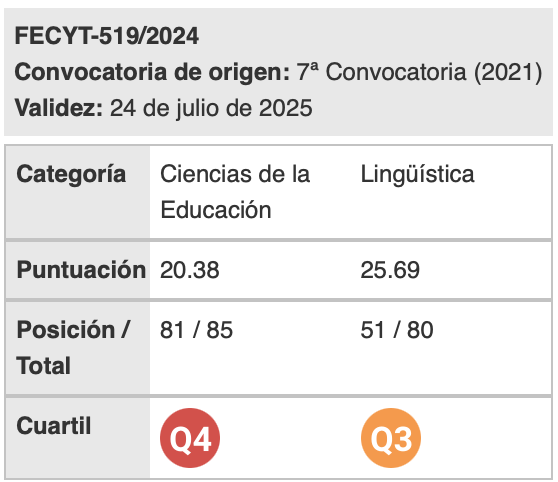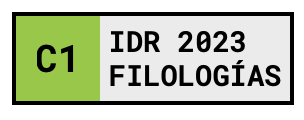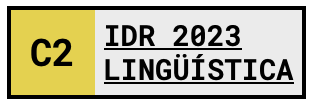Junior University: A rite of passage
Keywords:
CLIL, ESP, EAP, higher education, secondary educationAbstract
The transition between secondary and tertiary education has often been described as a “gap” implying that it is lacking in some way and that secondary students need better preparation for further education (Jansen & van der Meer, 2012; Juarez-Dappe, 2011; Triado, 2012). Programmes, such as the Junior University, a pre-university summer school for 16-18 year olds, integrate learning of specific subject matter and English and make an important step towards preparing students. This article describes the Junior University, a two-week international experience at a local university setting, which gives students a taste of academic subject matter and does so through the medium of English. Another characteristic of the Junior University is the Content and Language Integrated Learning (CLIL) model underlying its classroom practice. Results from students’ satisfaction questionnaires from the pilot Junior University programme are presented, which were generally positive. The article concludes with some improvements made based on the initial pilot experience and also the benefits in setting up such programmes at Spanish universities.
Downloads
References
Burgaya, J. & Torrents, R. (1999). Vic, la ciutat i la universitat. Vic: Servei de Publicacions de la Universitat de Vic.
Coyle, D. (2010). Foreward. In D. Lasagabaster Herrarte, & Y. Ruiz de Zarobe (Eds.), CLIL in Spain: Implementation, results and teacher training (pp.vii-viii). Newcastle, UK: Cambridge Scholars Publishing.
Coyle, D., Hood, P. & Marsh, D. (2010). CLIL content and language integrated learning. Cambridge: Cambridge University Press.
Cummins, J. (1984). Bilingual Education and Special Education: Issues in Assessment and Pedagogy. San Diego: College Hill.
Dalton-Puffer, Ch. & Smit, U. (2007). Introduction. In Ch. Dalton-Puffer & U. Smit (Eds.), Empirical Perspectives on CLIL Classroom Discourse (pp.7-23). Wien: Peter Lang.
Dearing, R. & King, L. (2007). The Languages Review. Nottingham: Department for Education and Skills Publications. Retrieved March 1, 2013, from: http://www.teachernet.gov.uk/_doc/11124/LanguageReview.pd
Echevarria, J., Vogt, M. E. & Short, D. (2008). Making Content Comprehensible for English Language Learners: The SIOP® Model, Third Edition. Boston: Allyn & Bacon.
Jansen, E. & van der Meer, J. (2012). Ready for University? A Cross-National Study of Students’ Perceived Preparedness for University. Australian Educational Researcher, 39(1), 1-16.
Johnson, D.W. & Johnson, R.T. (2002). Learning Together and Alone: Overview and Meta-analysis. Asia Pacific Journal of Education, 22(1), 95-105.
Juarez-Dappe, P. (2011). Bridging the Gap: On Ways to Improve Collaboration between Secondary Teachers and University Professors. The History Teacher, 44(2), 251-259.
Klaassen, R. (2001). The International University Curriculum: Challenges in English-Medium Engineering Education. Delft: Department of Communication and Education, Delft University of Technology.
Marsh, D., Coyle, D., Kitanova, S., Maljers, A., Wolff, D., & Zielonka, B. (Eds.) (2005). Project D3 – CLIL Matrix. The CLIL quality matrix. Central Workshop Report, 6/2005. Graz: European Centre of Modern Languages. Retrieved March 1, 2013, from: http://archive.ecml.at/mtp2/clilmatrix/ pdf/wsrepD3E2005_6.pdf
Mehisto, P. (2012). Criteria for producing CLI learning material. Encuentro 21, 15- 33.
Pinyana, A. (2012). The future of college education: Challenges and responses in business and communication education. Hallym University Conference Proceedings: Hallym University, South Korea.
Triado, X. (2012). La transició dels estudis de secundària a la universitat: com fer el camí més segur. Institut de Ciències de l’Educació. Universitat de Barcelona. Retrieved March 1, 2013, from: http://www4.ub.edu/gidoe/wp-content/ uploads/2012/07/Transicio-de-secundaria-a-la-universitat.pdf
Wächter, B. (2000). Internationalisation at home –the context. In P. Crowther, M. Joris, M. Otten, B. Nilsson, H. Teekens & B. Wächter (Eds.), Internationalisation at Home A Position Paper. Drukkerij Raddraaier, Amsterdam: European Association for International Education.
Downloads
Published
How to Cite
Issue
Section
License
Authors who publish with this journal agree to the following terms:
- Authors retain copyright and grant the journal right of first publication with the work simultaneously licensed under a Creative Commons Attribution License that allows others to share the work with an acknowledgement of the work's authorship and initial publication in this journal.
- Authors are able to enter into separate, additional contractual arrangements for the non-exclusive distribution of the journal's published version of the work (e.g., post it to an institutional repository or publish it in a book), with an acknowledgement of its initial publication in this journal.
- Authors are permitted and encouraged to post their work online (e.g., in institutional repositories or on their website) prior to and during the submission process, as it can lead to productive exchanges, as well as earlier and greater citation of published work (See The Effect of Open Access).

Revista de Lenguas para fines específicos is licensed under a Creative Commons Reconocimiento-NoComercial-SinObraDerivada 4.0 Internacional License.
























